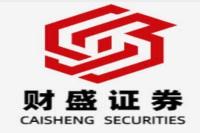宁德时代换电模式:撬动新能源汽车未来?
元描述: 宁德时代换电模式,巧克力换电方案,EVOGO,电池标准化,换电站建设,新能源汽车补能,储能,绿电消纳,行业协同,市场前景分析。
Wow! Imagine a future where swapping your car battery is as quick and easy as filling up with gas. That’s the ambitious vision driving Ningde Times’s (CATL) foray into battery swapping, and it's a game-changer that could redefine the electric vehicle (EV) landscape. This isn't just about faster refueling; it's about creating a whole new ecosystem, addressing range anxiety, optimizing energy grids, and potentially revolutionizing how we think about EV ownership. But is it a realistic vision? This in-depth analysis dives deep into CATL's revolutionary approach, exploring the challenges, opportunities, and the potential impact on the future of electric mobility. We'll unpack the technical hurdles, examine the strategic partnerships, and assess whether CATL's ambitious goal of 30,000 battery swap stations is achievable. Get ready for a fascinating journey into the heart of the EV revolution! This isn't your average news report; it's a comprehensive exploration of a technology poised to shake up the automotive world. Buckle up!
宁德时代换电模式:巧克力换电生态的崛起
宁德时代,这个全球动力电池巨头,在2021年成立了全资子公司时代电服,正式进军换电领域。他们的“巧克力”换电块和EVOGO换电服务品牌,迅速成为行业焦点。这可不是简单的“跟风”;CATL正试图用其强大的技术实力和产业链整合能力,打造一个全新的换电生态系统。 他们不是在玩游戏,而是玩真的!
Their approach is refreshingly different. Instead of simply offering another battery-swapping solution, CATL has created a vertically integrated system. This means they control most aspects of the process, from battery manufacturing and standardization to station construction and even grid integration. This vertical integration is a testament to their ambition and a key differentiator in a market full of competitors. It's a bold move, but one that could pay off big time.
But let's be real, this isn't a walk in the park. Building a nationwide network of swap stations is a massive undertaking, requiring substantial capital investment and overcoming significant logistical challenges. They're not just building stations; they're constructing the infrastructure for a new era of electric mobility. It's a huge bet, but one with potentially huge rewards.
巧克力换电块:标准化与灵活性兼顾
CATL's "chocolate" battery blocks are a crucial element of their strategy. These standardized battery modules – available in 20 and 25 number designations, each with LFP and ternary options – are designed for seamless swapping across different vehicle models. This standardization is a key to scalability and cost reduction. Imagine the efficiency gains: no more fiddling with different battery types; just a quick, standardized swap.
The beauty of the system lies in its flexibility. Different battery sizes offer various range options, allowing customers to choose the perfect fit for their needs and budget (and their wallets will thank them). This is a smart move, addressing a common concern about battery swap solutions: the potential for incompatibility between different models and brands. They’ve thought ahead, and that’s crucial.
换电站网络建设:一个雄心勃勃的计划
CATL's vision is nothing short of audacious: 30,000 swap stations by a certain time. That's a massive number, dwarfing the current charging infrastructure. But their approach is strategic. They're not going it alone. Their plan involves a phased rollout, starting with self-construction of the first 1000 stations, then collaborating with partners to expand to 10,000, and finally opening the system up for broader societal participation to reach the ambitious 30,000 target. That's a masterclass in strategic partnerships and resource leveraging.
The stations themselves are designed for efficiency and scalability. Each station can accommodate a substantial number of battery blocks, maximizing throughput and minimizing space requirements—a big deal in crowded urban areas. The aim is to make swapping as convenient as possible, comparable to a quick gas fill-up.
Beyond just swapping, CATL envisions these stations as integrated energy hubs. They'll incorporate bidirectional charging capabilities, allowing the batteries to feed energy back into the grid during peak demand, essentially functioning as distributed energy storage (DES) units. This is a win-win: it helps stabilize the power grid and maximizes the utilization of renewable energy sources. It's ingenious.
行业协同与标准化:破局的关键
CATL understands that success hinges on industry collaboration. They've forged partnerships with major automakers like Changan, GAC, BAIC, Wuling, and FAW, ensuring that their batteries are compatible with a wide range of vehicles. Collaboration is key; no one player can do this alone. This isn't about CATL dominating the market; it's about creating a collaborative ecosystem that benefits everyone.
But standardization is paramount. CATL is actively involved in developing industry standards, working with organizations like the China Automotive Technology and Research Center (CATARC) to create a unified framework for battery swapping. This collaborative effort is a lifeline for the entire industry. Without standardization, the whole endeavor becomes a chaotic mess.
换电模式:挑战与机遇并存
While the potential is huge, the path ahead is certainly not without its hurdles. Customer adoption, regulatory frameworks, and the high capital investment required are all significant challenges. Range anxiety remains a major concern for many EV drivers, and convincing them to embrace a new technology takes time and effort. It’s a marathon, not a sprint.
However, the advantages of battery swapping are compelling. It addresses the biggest pain points of EV ownership: range anxiety and long charging times. It offers a faster, more convenient alternative to traditional charging, and the potential for grid-level energy management is a game-changer. It's a compelling story, and it's one that's gradually gaining traction.
常见问题解答 (FAQ)
Here are some frequently asked questions about CATL's battery swapping system:
Q1: How much does the battery swapping service cost?
A1: CATL offers various subscription packages, with monthly fees varying based on the battery size and usage. Prices are competitive and designed to be comparable to traditional fuel costs. Specific prices are detailed on their website and vary by region, plan and battery type.
Q2: How long does a battery swap take?
A2: CATL aims for a swap time of approximately 100 seconds, making it comparable to the time it takes to fill up a gas tank.
Q3: What if there are no swap stations near me?
A3: CATL’s rollout plan involves a strategic expansion of its network, initially targeting major cities and transportation hubs. The expansion is planned across several phases, ensuring widespread coverage over time.
Q4: What happens if my battery is damaged during a swap?
A4: CATL employs robust safety protocols and quality control measures to minimize the risk of damage. In the unlikely event of damage, CATL has comprehensive insurance and replacement policies in place.
Q5: Are CATL's batteries environmentally friendly?
A5: CATL uses high quality recyclable materials in its battery production and is committed to sustainable practices throughout its supply chain. They are committed to ensuring a reduced environmental impact.
Q6: What is the future vision for this technology?
A6: CATL hopes to see battery swapping become a widely accepted form of EV refueling, alongside home charging and public fast charging, comprising a significant portion of the overall EV infrastructure. Their aim is a tripartite division of refueling types.
结论:一个令人兴奋的未来
CATL’s foray into battery swapping is more than just a new business venture; it's a bold attempt to reshape the future of electric mobility. While challenges remain, the potential benefits of this innovative approach are immense. The speed, convenience, and grid-integration capabilities of battery swapping could revolutionize how we power our vehicles and manage our energy systems. It's a vision worthy of attention, and one that promises a truly exciting future for the EV industry. It’s a story that’s just beginning to unfold. Stay tuned!



